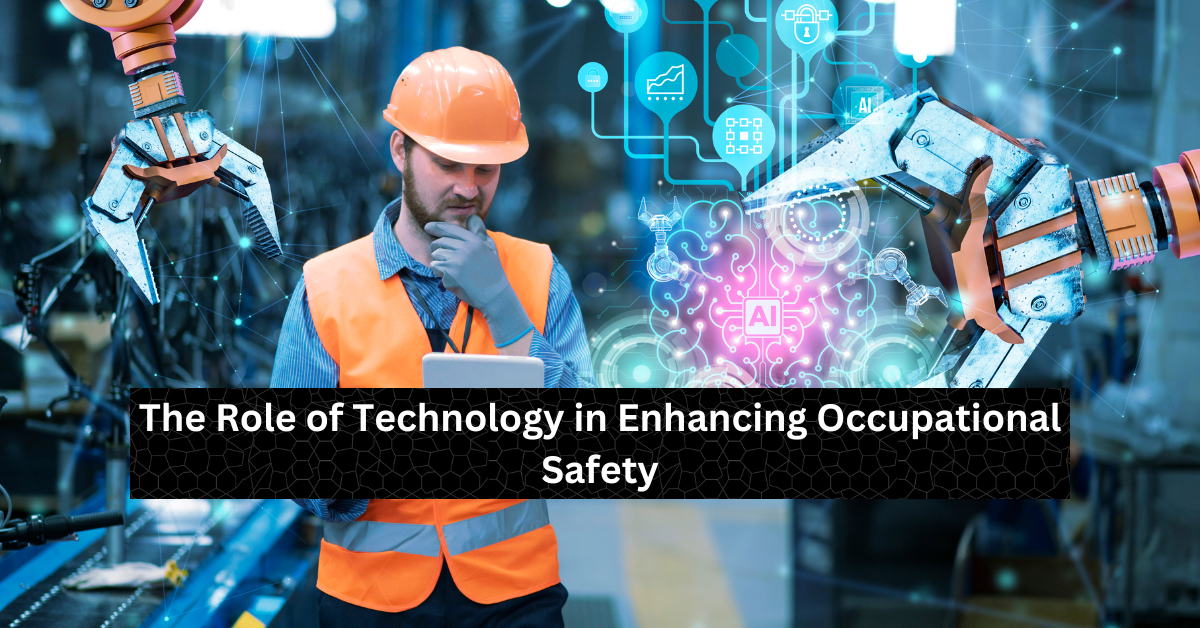The Role of Technology in Enhancing Occupational Safety
Occupational health and safety is very important nowadays. There may arise injuries at the workplace. Occupational health and safety requirements are what we need to focus on at that time.
Workplaces should promote occupational health and safety knowledge to develop and implement strategies and regulations to limit hazards that could lead to physical or mental harm now or in the future.
Its scope is limitless; it encompasses disciplines ranging from hazardous materials and the spread of disease to ergonomics and violence prevention. As per law, it is advised that employers establish and maintain a safe and healthy environment for their workers.
Overall, work influences our health and well-being. Occupational hazards are common in every workplace; only the type or intensity of the hazard might differ.
In short, occupational health and safety (OHS) is the area of public health that is devoted to the anticipation, recognition, evaluation, and control of these environmental factors or stresses arising in or from the workplace.
Is there any effective approach to improving workers’ health and safety conditions and ensuring health and safety management in general? Yes, technology can effectively improve workplace safety.
Let’s see how technology can have an impact on workplace safety.
Ready, Let’s dive in.

How can we utilize technology to lessen workplace hazards?
We can’t deny the positive side of technology for a better workplace culture. Technology rules everywhere. And it is now more important than ever to take advantage of technological advances in occupational health management.
Technology has currently become a cog in the machine of occupational health management, from tracking employee health to mitigating risks.
Now, let’s take a sneak 360 view of how technology can be used to enhance occupational health management and what data suggests about its effectiveness.
Our technological world is emerging, thanks to the latest research and developments. This technological era witnessed the advancement of artificial intelligence, nanotechnology, virtual reality, and robotics. All these are characterized by radical novelty, relatively fast growth, coherence, prominent impact, uncertainty, and ambiguity.
Emerging technologies that are thriving in occupational health and safety are those technical innovations that mark progressive developments within the different fields of OHS (from the perspective of hazardous agents like chemical, physical, biological, ergonomics, and safety) in different stages of the hazards management program, including identifying, assessing, and controlling the risk.
Emerging technologies present both challenges and opportunities for work safety and health. You have to take the design process for these new technologies into account to obtain the most benefits from them.
Where can we apply these emerging technologies?
These emerging technologies can be applied to the various stages of workplace hazards, like
- Sampling
- Identification
- Evaluation
- Control
In this way, we can address the shortcomings of existing methods and tools while also taking a step toward preserving and promoting employee health.
New technologies increase the precision and accuracy of monitoring results, shorten the time or difficulty of evaluating OHS risks, and increase the effectiveness of control measures while consuming less energy and money.
Other benefits
- Centralized Health Data Management: Having Occupational health management software helps employers centralize employee health data together, making it easier to identify patterns and trends that may indicate a potential safety risk.
The coordination of health data allows employers to quickly identify workers who may be at risk due to factors such as chronic health conditions or medication use.
- Increased Efficiency: The arrival of technology has benefits like streamlining processes, reducing paperwork, and saving time. For instance, electronic medical records can enhance the speed and accuracy of medical assessments and ensure that all necessary data is recorded.
- Better Employee Engagement: Technology can increase employee engagement and motivation. Wearable technology, for instance, can track employees’ activity levels, promote healthy habits, and offer individualized health coaching.
- Cost-Effectiveness: Technology can assist employers in lowering insurance premiums, medical expenses, and workers’ compensation claims by enhancing safety and reducing workplace accidents. That is, technology can give you a lot of bang for your buck.
The Bottomline
Voila! Now you have a useful insight into the role of technology in enhancing occupational safety. Incorporate technology into your workplace and get ready to notice how it improves workplace safety.
Nevertheless, employers should be aware of the challenges associated with implementing new technology, including cost, data security, technical issues, and employee privacy concerns. Employers can select software that meets their unique needs and requirements with the aid of thorough research and analysis. Also, never forget to choose the right software for your workplace, as it will not only help to reduce costs and increase productivity but also minimize risks associated with data security and technical issues. By doing so, we can improve occupational health and safety requirements for both employers and employees.


